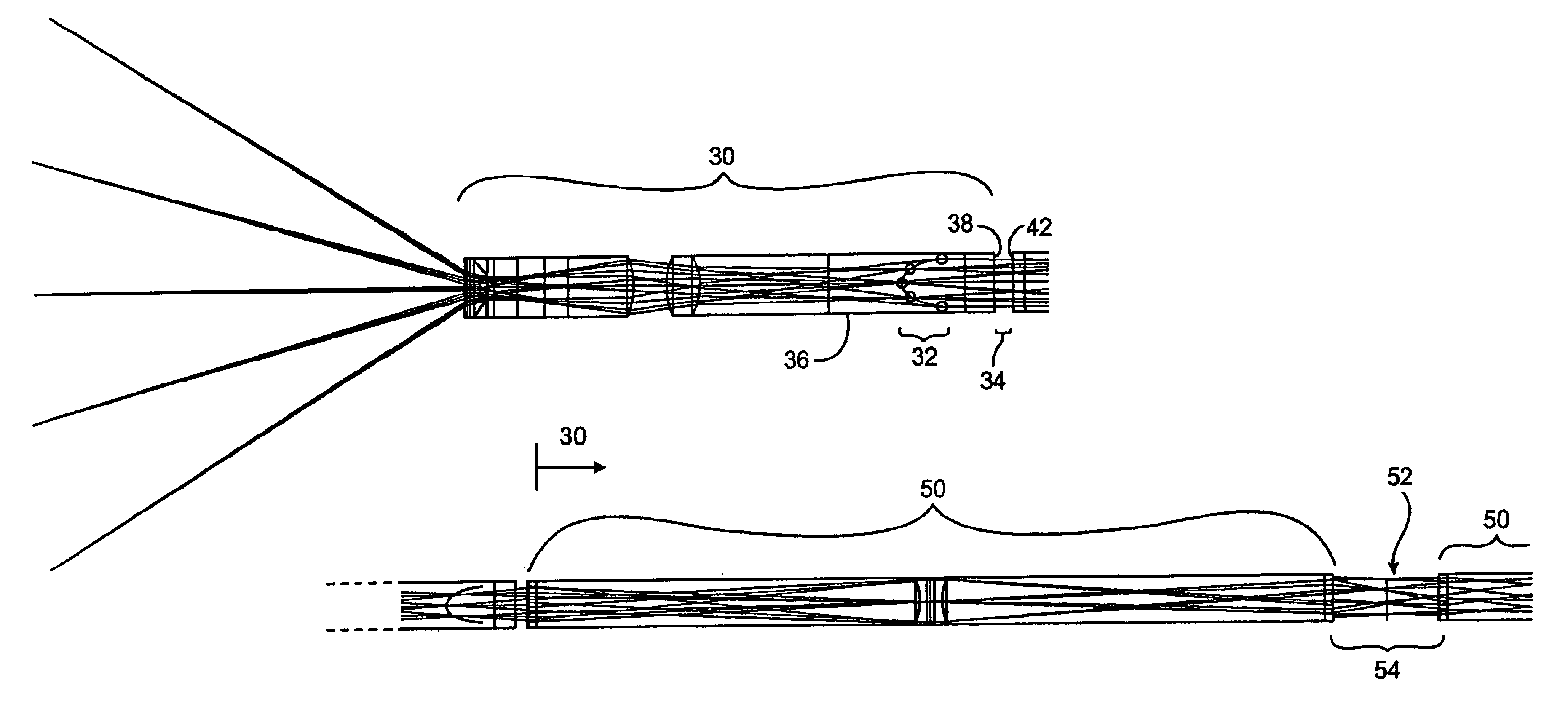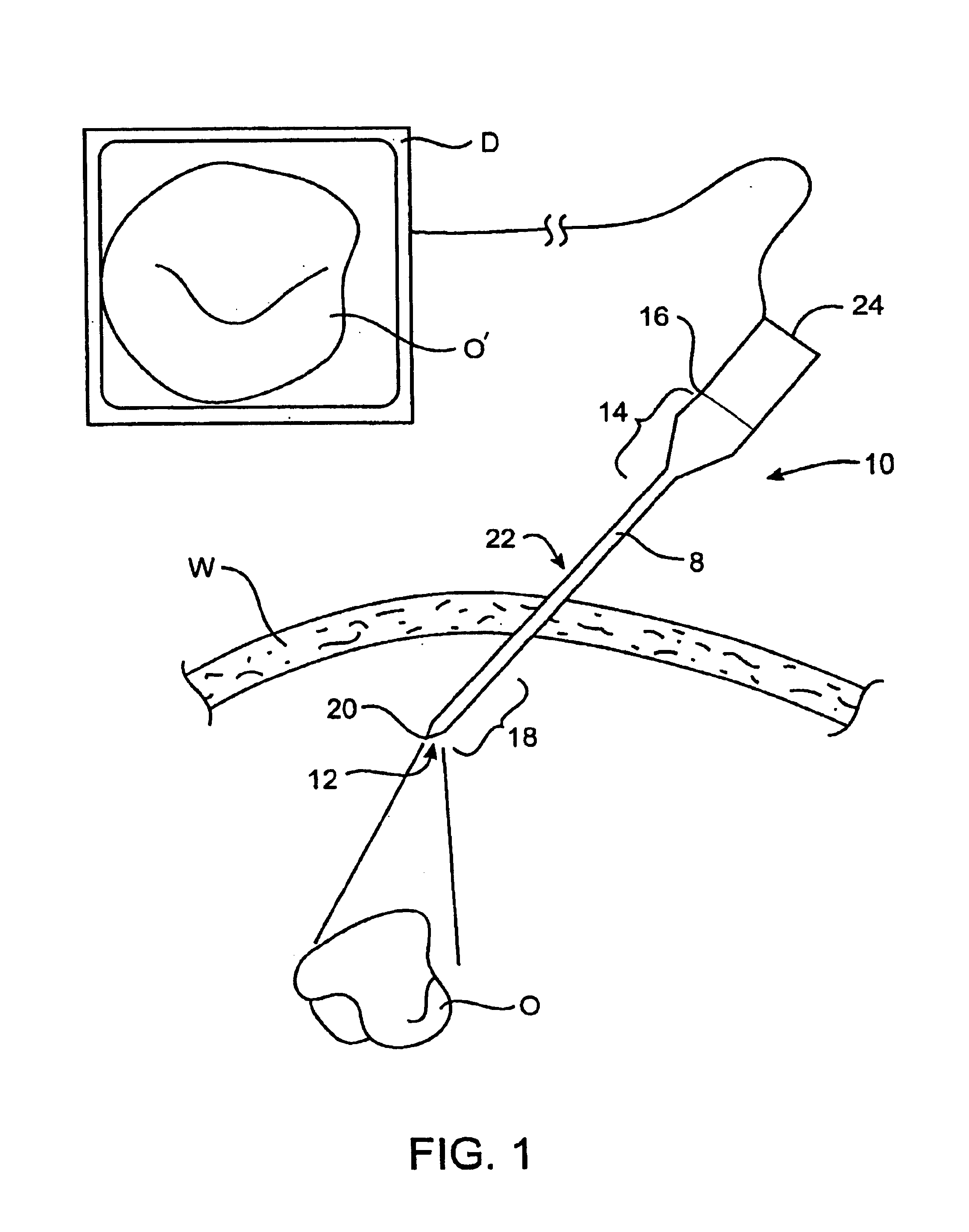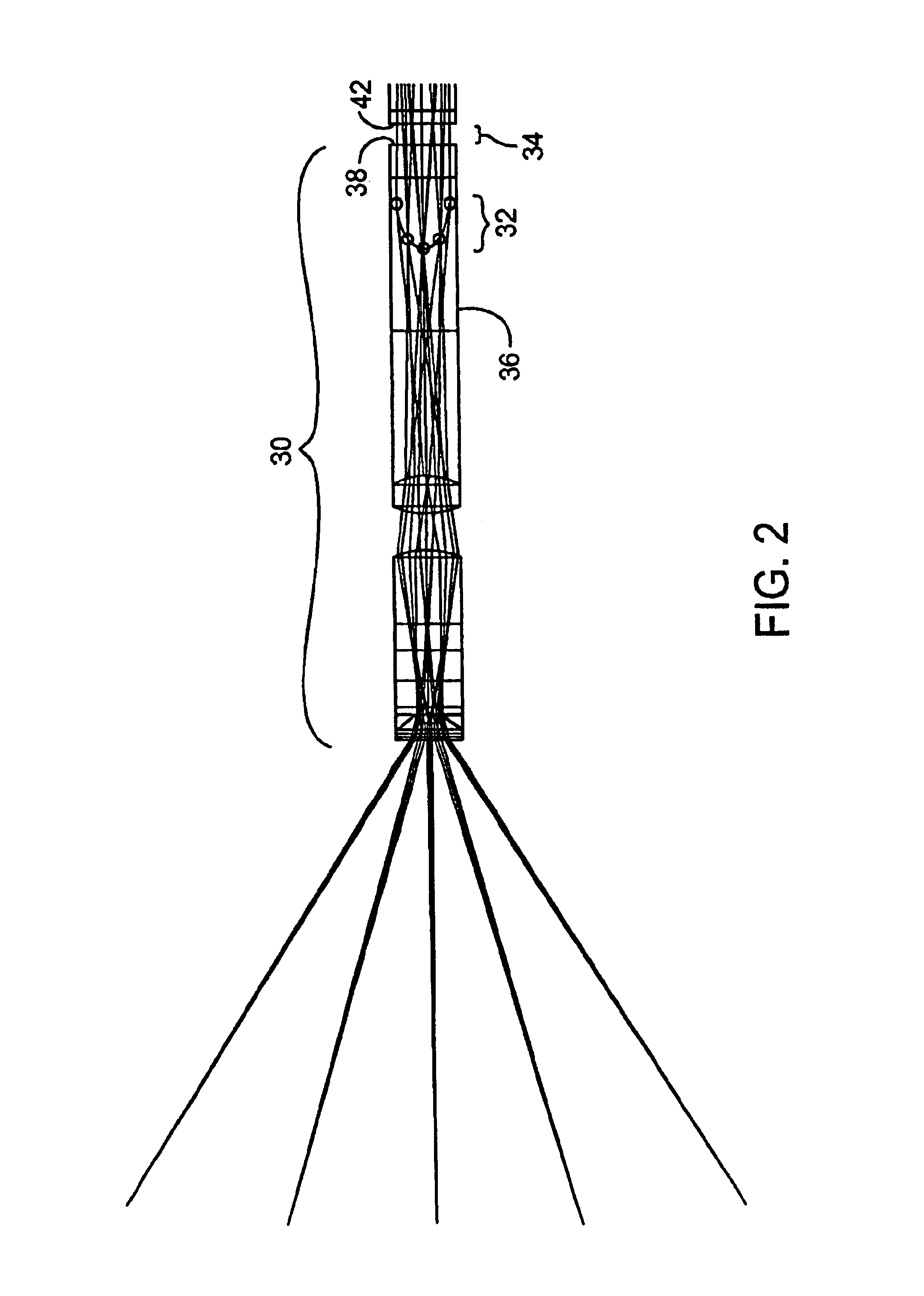Endoscope
a technology of endoscope and endoscope, which is applied in the field of endoscope, can solve the problems of unbalanced image distortion and expansion
- Summary
- Abstract
- Description
- Claims
- Application Information
AI Technical Summary
Benefits of technology
Problems solved by technology
Method used
Image
Examples
Embodiment Construction
While the invention will generally be described herein with reference to surgical optical imaging devices and methods, the invention has applications for any lens systems that transfer optical information through a relay (a series of small diameter lenses) such as, for example, monoscopes, stereoscopes, boroscopes, periscopes, arthroscopes, and the like.
Referring now to FIG. 1, an endoscope 10 extends through a body wall W to an internal viewing site within a patient body. Endoscope 10 includes a shaft or body 8 containing an optical train 12. Endoscope 10 generally has a proximal portion 14 adjacent a proximal end 16, a distal portion 18 adjacent a distal end 20, and an intermediate portion 22 between the proximal and distal portions.
In use, an object O is within a field of view of endoscope 10, which transmits an image of the object O' proximally to a camera 24 optically coupled to proximal end 16 of the endoscope. Camera 24 will typically have a charge-couple device (CCD) or the ...
PUM
 Login to View More
Login to View More Abstract
Description
Claims
Application Information
 Login to View More
Login to View More - R&D
- Intellectual Property
- Life Sciences
- Materials
- Tech Scout
- Unparalleled Data Quality
- Higher Quality Content
- 60% Fewer Hallucinations
Browse by: Latest US Patents, China's latest patents, Technical Efficacy Thesaurus, Application Domain, Technology Topic, Popular Technical Reports.
© 2025 PatSnap. All rights reserved.Legal|Privacy policy|Modern Slavery Act Transparency Statement|Sitemap|About US| Contact US: help@patsnap.com



